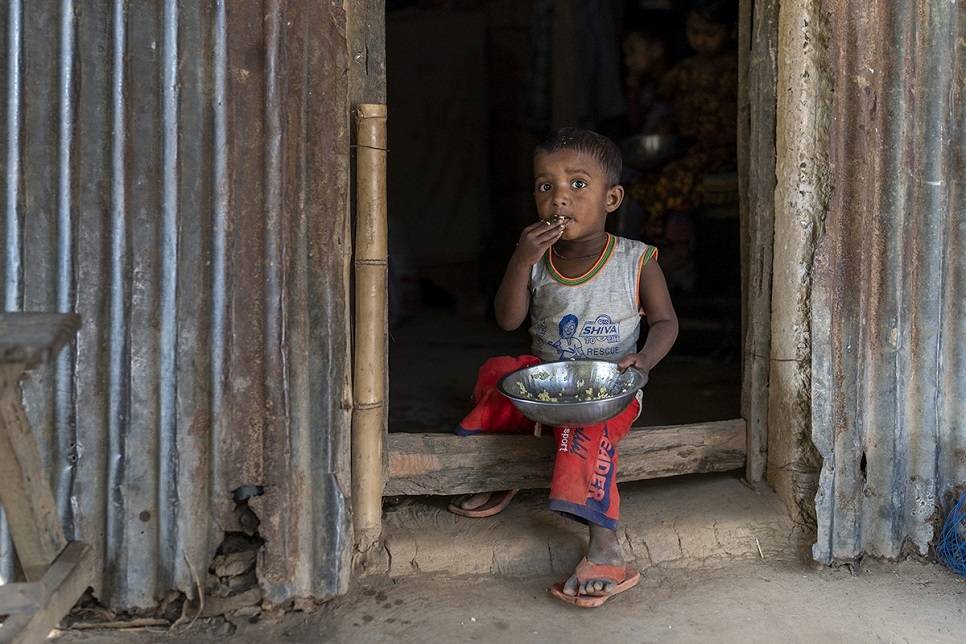Over 122 million more people are facing hunger in the world since 2019 due to the pandemic and repeated weather shocks and conflicts, including the war in Ukraine, according to the latest State of Food Security and Nutrition in the World (SOFI) report published today jointly by five United Nations specialized agencies.
If trends remain as they are, the Sustainable Development Goal of ending hunger by 2030 will not be reached, the Food and Agriculture Organization of the United Nations (FAO), the International Fund for Agricultural Development (IFAD), the United Nations Children’s Fund (UNICEF), the World Health Organization (WHO) and the World Food Programme (WFP) warn, reports Daily Sun.
A wake-up call for the fight against hunger
The 2023 edition of the report reveals that between 691 and 783 million people faced hunger in 2022, with a mid-range of 735 million. This represents an increase of 122 million people compared to 2019, before the COVID-19 pandemic.
While global hunger numbers have stalled between 2021 and 2022, there are many places in the world facing deepening food crises. Progress in hunger reduction was observed in Asia and Latin America, but hunger was still on the rise in Western Asia, the Caribbean and throughout all subregions of Africa in 2022. Africa remains the worst-affected region with one in five people facing hunger on the continent, more than twice the global average.
“There are rays of hope, some regions are on track to achieve some 2030 nutrition targets. But overall, we need an intense and immediate global effort to rescue the Sustainable Development Goals. We must build resilience against the crises and shocks that drive food insecurity-from conflict to climate, said UN Secretary-General António Guterres through a video message during the launch of the report at the UN Headquarters in New York.
The heads of the five UN agencies, FAO Director-General QU Dongyu; IFAD President Alvaro Lario; UNICEF Executive Director Catherine Russell; WFP’s Executive Director Cindy McCain; and WHO Director General Dr. Tedros Adhanom Ghebreyesus write in the report’s Foreword: “No doubt, achieving the Sustainable Development Goal target of Zero Hunger by 2030 poses a daunting challenge. Indeed, it is projected that almost 600 million people will still be facing hunger in 2030. The major drivers of food insecurity and malnutrition are our “new normal”, and we have no option but to redouble our efforts to transform agrifood systems and leverage them towards reaching the Sustainable Development Goal 2 (SDG 2) targets.”
Beyond hunger
The food security and nutrition situation remained grim in 2022. The report finds that approximately 29.6 percent of the global population, equivalent to 2.4 billion people, did not have constant access to food, as measured by the prevalence of moderate or severe food insecurity. Among them, around 900 million individuals faced severe food insecurity.
Meanwhile, the capacity of people to access healthy diets has deteriorated across the world: more than 3.1 billion people in the world – or 42 percent – were unable to afford a healthy diet in 2021. This represents an overall increase of 134 million people compared to 2019.
Millions of children under five continue to suffer from malnutrition: in 2022, 148 million children under five years of age (22.3 percent) were stunted, 45 million (6.8 percent) were wasted, and 37 million (5.6 percent) were overweight.
Progress has been seen in exclusive breastfeeding with 48 percent of infants under 6-months of age benefiting from this practice, close to the 2025 target. However, more concerted efforts will be required to meet the 2030 malnutrition targets.
New evidence: Urbanization is driving changes in agrifood systems
The report also looks at increased urbanization as a ‘megatrend’ affecting how and what people eat. With almost seven in ten people projected to live in cities by 2050, governments and others working to tackle hunger, food insecurity and malnutrition must seek to understand these urbanization trends and account for them in their policymaking.
In particular, the simple rural and urban divide concept is no longer sufficient to understand the ways in which urbanization is shaping agrifood systems. A more complex rural-urban continuum perspective is needed considering both the degree of connectivity that people have and types of connections that exist between urban and rural areas.
For the first time, this evolution is documented systematically across eleven countries. The report illustrates that food purchases are significant not only among urban households but also across the rural-urban continuum, including those residing far from urban centers. The new findings also show how consumption of highly processed foods is also increasing in peri-urban and rural areas of some countries.
Unfortunately, spatial inequalities remain. Food insecurity affects more people living in rural areas. Moderate or severe food insecurity affected 33 percent of adults living in rural areas and 26 pe in urban areas.
Children’s malnutrition also displays urban and rural specificities: the prevalence of child stunting is higher in rural areas (35.8 percent) than in urban areas (22.4 percent). Wasting is higher in rural areas (10.5 percent) than in urban areas (7.7 percent), while overweight is slightly more prevalent in urban areas (5.4 percent) compared to rural areas (3.5 percent).
The report recommends that to effectively promote food security and nutrition, policy interventions, actions and investments must be guided by a comprehensive understanding of the complex and changing relationship between the rural-urban continuum and agrifood systems.
Bd-pratidin English/Golam Rosul









































































